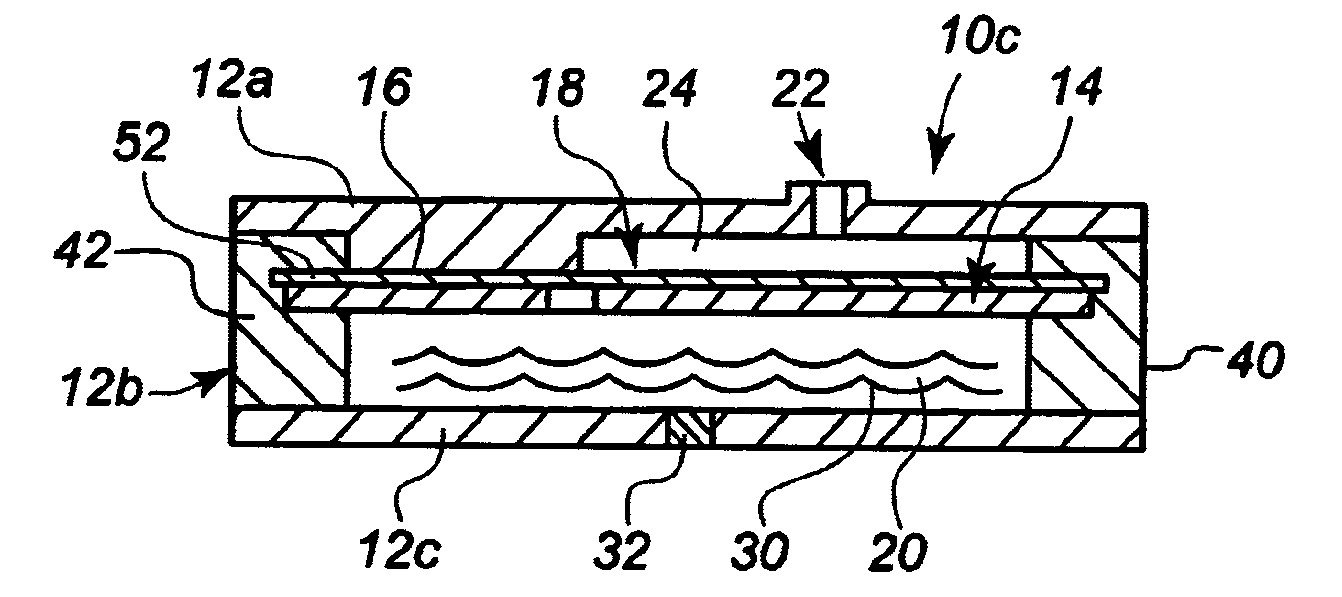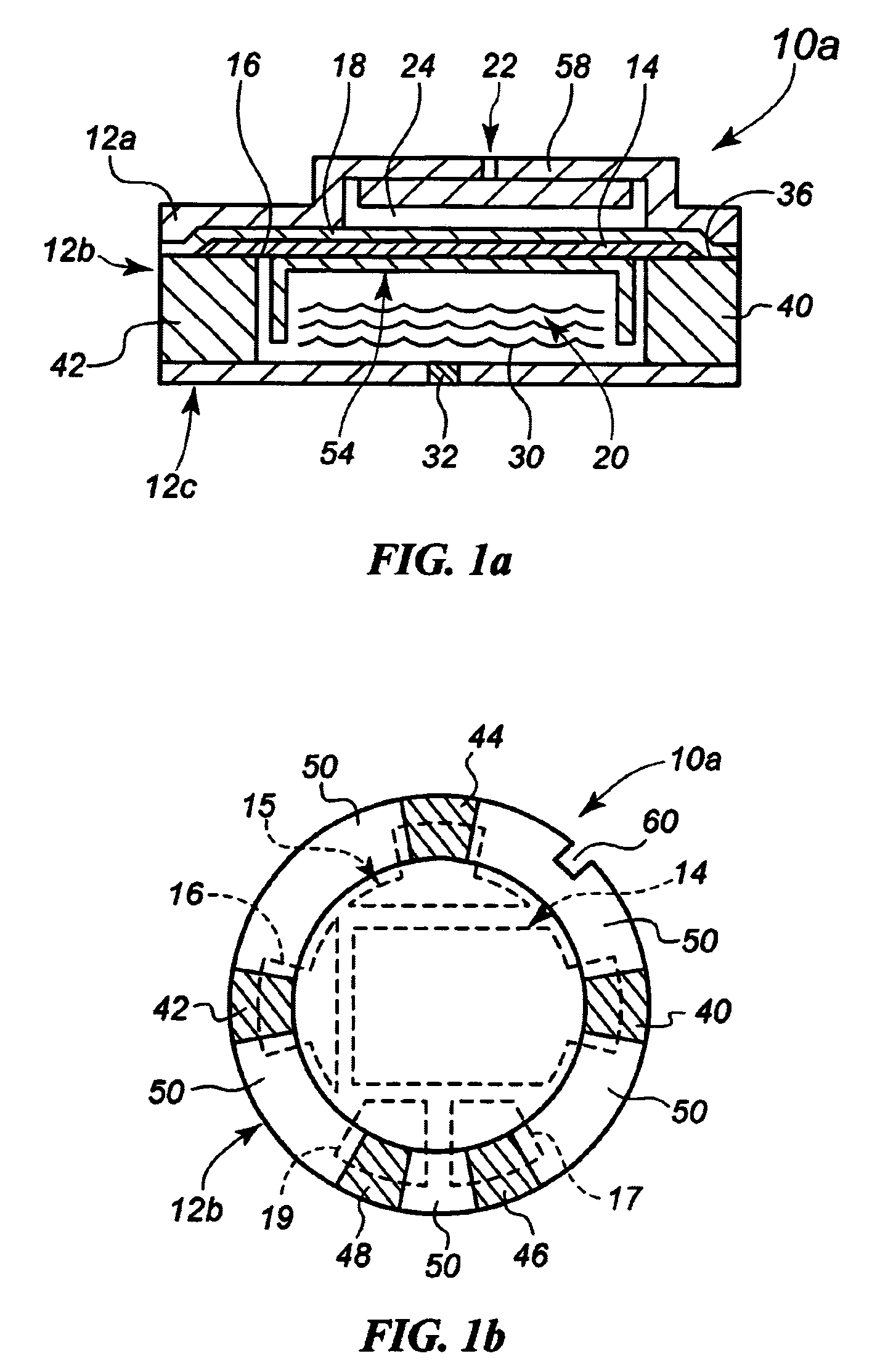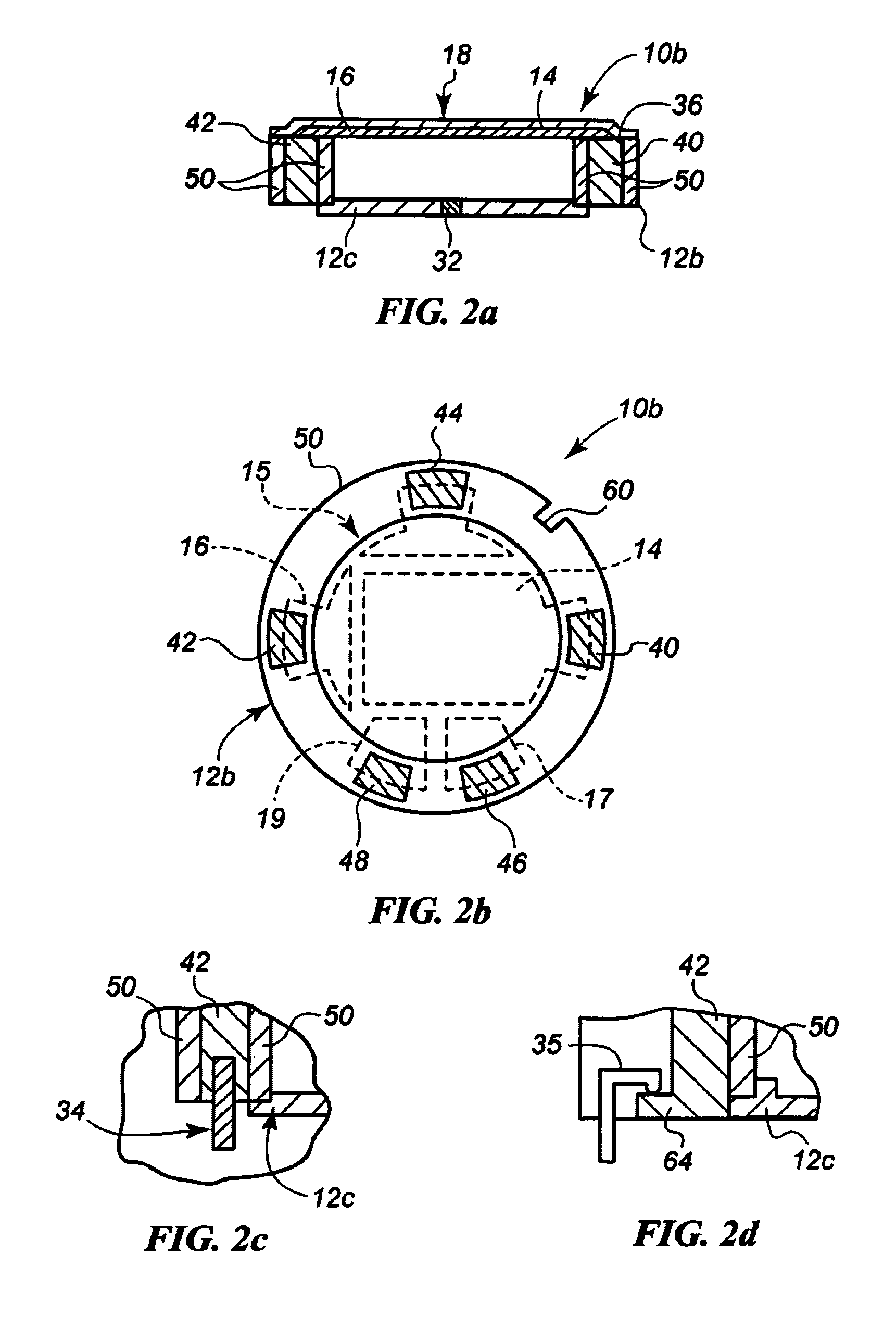Electrochemical gas sensor
a gas sensor and electrochemical technology, applied in the field of electrochemical gas sensors, can solve the problems of increasing the awkward assembly of gas sensor having metallic contacts, and high cost of gas sensor manufacture, and achieves the effect of cheap and easy manufacturing, cheap and reliabl
- Summary
- Abstract
- Description
- Claims
- Application Information
AI Technical Summary
Benefits of technology
Problems solved by technology
Method used
Image
Examples
Embodiment Construction
[0020]Referring to FIG. 1a, there is shown a generally cylindrical electrochemical gas sensor (10a) comprising a three-part housing (12), namely a body part (12b) which is cylindrical with a hollow interior for forming an electrolyte reservoir (20), a disc-shaped cap member (12a), and a disc-shaped lid (12c). A porous flexible membrane (18) in the form of a disc is disposed between body member (12b) and cap member (12a). The housing (12) can have a groove defined therein, the groove being dimensioned so as to retain the flexible membrane substrate (18).
[0021]Sensing (14), reference (15) (not shown), counter (16) electrodes, and optional test gas generation electrodes (not shown), all formed from a mixture of electrically conductive catalyst particles in PTFE (or similar polymeric) binder, are formed on the lower surface of the substrate (18) to form an electrode assembly. The electrodes can be screen printed, filter deposited, or sintered (or any other method suitable for producing ...
PUM
| Property | Measurement | Unit |
|---|---|---|
| temperature | aaaaa | aaaaa |
| electrically conductive | aaaaa | aaaaa |
| electrochemical reaction | aaaaa | aaaaa |
Abstract
Description
Claims
Application Information
 Login to View More
Login to View More - R&D
- Intellectual Property
- Life Sciences
- Materials
- Tech Scout
- Unparalleled Data Quality
- Higher Quality Content
- 60% Fewer Hallucinations
Browse by: Latest US Patents, China's latest patents, Technical Efficacy Thesaurus, Application Domain, Technology Topic, Popular Technical Reports.
© 2025 PatSnap. All rights reserved.Legal|Privacy policy|Modern Slavery Act Transparency Statement|Sitemap|About US| Contact US: help@patsnap.com



